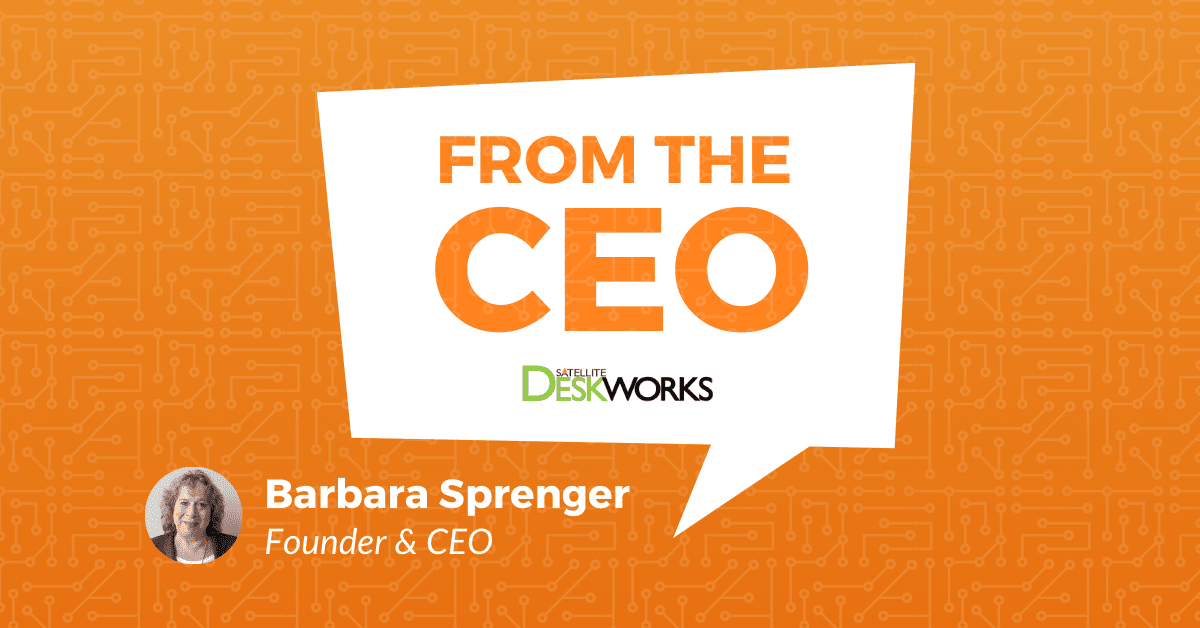The changing flex space world for employers, employees, operators and building owners

As people move back out into the work world, take a step back and notice the everyday changes in people’s perspectives. They’re significant.
I just got off the phone with an old friend/former employee who now works for a very large enterprise. She said all of management is scrambling to find the tools they need for employees to be productive in this new world order.
You’re an important part of that, wherever you exist in the flex work ecosystem. People will be—and are—working in multiple locations: home, corporate offices, customer sites, coworking spaces and everything in-between.
If you run a flex space, are you ready to deal with a different type of member who may come in just a few days per week or month? Here are some key differences:
- They may not be looking for the same type of strong community that solopreneurs want, and your professional amenities are even more important for them. They need a comfortable, quiet place to get work done, but they probably consider themselves more connected into their employer’s environment.
- If you have standard offerings of private offices, dedicated desks and open coworking, you may need to add something between a private office and a desk. We like having 6’x6’ sound insulated workstations, as an intermediate step for those who need just a bit more space or a hard-wired connection, but not an office.
- Your IT infrastructure has to be rock solid. People can’t lose connection on a Zoom call or find themselves impacted by a large user across the space.
- Can you create plans for these part-time telecommuters? And track their usage without tearing your hair out? It’s absolutely vital that you can tailor plans to fit people’s changing needs. Can you set up 5 and 12 days per month or ½ day plans for any space? Can you create a “bucket of hours” for those who are not ready to commit to recurring monthly costs? Your software should be able to do all of this, and do it easily as member needs change.
If you’re an employer with a large workforce, are you trying to reduce your facility footprint? Do you have 60 seats—or less—for each 100 employees?
This is actually an easy problem—you’re managing the same thing that coworking spaces have been managing for years. Employees should be able to choose a facility, see who’s in the office on a given day, see what spaces are available on a floorplan, reserve a desk and check in. And do it all on a mobile app. As an employer, you also want to quickly see real-time reports of usage so you can scale space as needed.
If you’re a property owner or manager, what is happening to your 5 and 10 year leases?
Your world is going through a significant upheaval. I won’t quote statistics on the large volume of subleases on the market, dragging down your prices. You know the flex market is taking another several percent, expected to grow to 30% of commercial real estate. But this is such an opportunity for you to understand the arbitrage nature of flex. Each square foot can produce higher revenue by chopping it into space/time pieces, and no one tenant is responsible for too much of your income. Your revenue is smoothed, and typically at a higher rate. Make a deal with an experienced operator and start learning.
If you’re an employee, how is this moving you closer to a desirable work/life balance?
Yes, work/life balance exists. Your employer has seen that you can be productive without them managing by having butts in seats in one corporate location. You might want to work at home sometimes, or somewhere near home, but not in your home. And you probably want to be at your corporate office sometime each month.
Your town can be more vibrant with a true town core because people are there during the working day, caring about where they live. You can work closer to where your kids go to school, so you’re close for a doctor’s appointment or a school trip. (I can’t tell you how great it is that my grandkids walk over to our coworking space after school sometimes and insist on taking me out for coffee!)
Yes, this is all a little scary, but it’s such an opportunity to create a world we want to live in—one with reduced commutes reducing CO2 emissions, our communities becoming truly vibrant places, and more time to have a life outside of work.
It’s all possible if we just embrace it and are intentional.
Here with you,
Barbara

Barbara Sprenger
Founder & CEO of Deskworks
Deskworks gives you the powerful and easy-to-use automations necessary to manage a sustainable flexible workspace in our rapidly changing industry. Contact us or schedule a free demo to learn more about the power of Deskworks automations.





